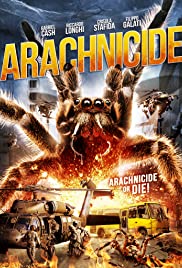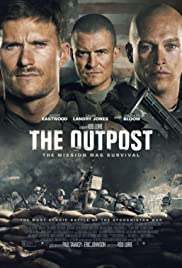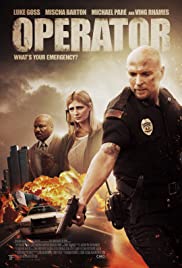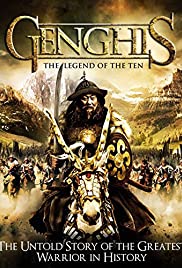Search

After his family is viciously murdered, a kind-hearted boy named Tanjiro Kamado resolves to become a Demon Slayer in hopes of turning his younger sister Nezuko back into a human. Together with his comrades, Zenitsu and Inosuke, along with one of the top-ranking members of the Demon Slayer Corps, Tengen Uzui, Tanjiro embarks on a mission within the Entertainment District, where they encounter the formidable, high-ranking demons, Daki and Gyutaro.

After years of experimenting, a researcher succeeds in creating an incubator that accelerates plant and animal growth. This technology is controlled by a powerful criminal organization and is being used to accelerate the growth of plants needed for the manufacture of narcotics and illegal drugs. To counter this criminal organization and destroy the laboratories they operate, the United Nations put together an elite team of operatives. The L9 Commando is a task force composed of 6 of the best soldiers from different Special Forces Units. After successfully taking down the drug operation. The L9 Commandos are called on for an important mission that brings them to Albania where they discover a sinister plan that could destroy everything. Arachnicide or die!

During World War II, a squad of five American soldiers become lost in Tunisia and are killed one by one in fights with German units. Finally only one man, Private Russo, is left, in the midst of a mine field, together with a German officer, locked in a stalemate. Russo has water, while the German claims to have a map revealing the mine positions. So Russo agrees to swap water for the map, but the German officer tries to double-cross him. This was Burt Topper’s debut film, made on 16mm on weekends together with some friends in Indio, California. It was also Wally Campo’s debut film, as well as script supervisor Joyce King’s.

The time is in the future and the youth gang violence is so high that the areas around some schools have become “free-fire zones”, into which not even the police will venture. When Miles Langford, the head of Kennedy High School, decides to take his school back from the gangs, robotics specialist Dr. Robert Forrest provides “tactical education units”. These are amazingly human-like androids that have been programmed to teach and are supplied with devastatingly effective solutions to discipline problems. So when the violent, out-of-control students of Kennedy High report for class tomorrow, they’re going to get a real education… in staying alive!

In the First World War, alongside the men fought an army of animals. Mules, oxen, dogs, horses, pigs, pigeons were used for moving units and materials, communications, and for the support of the troops. The forced cohabitation with men closer to each other in a possible fate of death and suffering: officers and enlisted men had the opportunity to give and receive affection, but also to deal with beings weak and completely dependent on their . Animals in the Great War offers an unconventional story of dramatic conflict, through letters, diaries and photographs taken by the fighters, and collected in the book that Lucio Fabi has derived from his research, The good soldier mule (ed. MURSIA). A documentary rebuild memories, stories, episodes of real life relationship, in and out of the trench, between humans and animals, including incredible moments of absolute serenity and tenderness, alternating the background of one of the most tragic periods in modern history.

A small unit of U.S. soldiers, alone at the remote Combat Outpost Keating, located deep in the valley of three mountains in Afghanistan, battles to defend against an overwhelming force of Taliban fighters in a coordinated attack. The Battle of Kamdesh, as it was known, was the bloodiest American engagement of the Afghan War in 2009 and Bravo Troop 3-61 CAV became one of the most decorated units of the 19-year conflict.

When the daughter of veteran 911 call center operator Pamela, and her estranged husband Jeremy, a Senior Police Officer, is kidnapped and held hostage, they are left desperate, with no choice but to follow the kidnapper’s rules: send messages through dispatch for all police and fire units to scatter to remote locations throughout the city where they are met with chaos. Not knowing who or why, the one thing they do know is if they fail to discreetly collaborate with one another – they will be solely responsible for facilitating the biggest crime in the city’s history. Now they must race against the clock to make the choice of their lives – save the city – or save their daughter.

A little known fact is that Chinggis Khaan, better known as Genghis Khan, would collect orphans from his bloody battlefields and have his own mother raise them. These adopted brothers grew up to become his most loyal officials and advisers. Khaan organised his Mongol soldiers into groups according to the decimal system. Soldiers were arranged in units of 10 (“aravt”), 100 (“zuut”), 1,000 (“minghan”) and 10,000 (“tumen”). Each unit had an appointed leader reporting to a larger unit. A 10-person “aravt” unit is ordered by Khaan to locate a skilled doctor who lives in a forest. En route, they discover an abandoned baby. He is in fact the child of an enemy warrior who gives pursuit, even though they have saved the child’s life. Whilst protecting the child from attacks from enemy soldiers, the members of the “aravt” must also complete their mission. Through their actions, they demonstrate the benevolence and bravery of Mongol warriors as the final battle closes in.